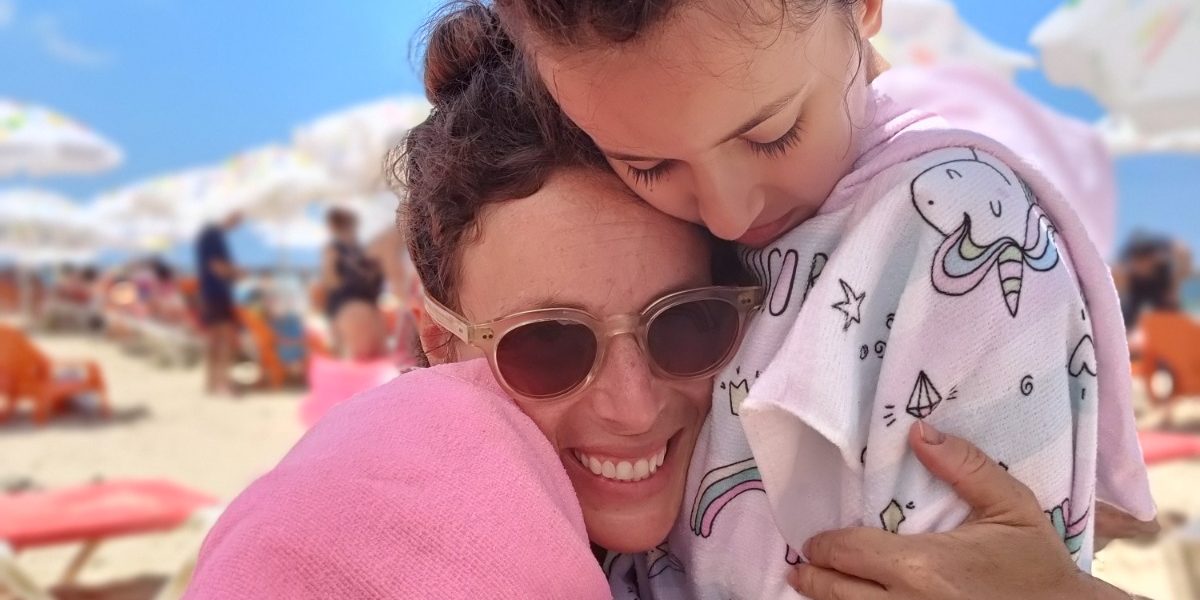Text and Movement in Parenting

*originally published in Hebrew as part of the Parental Choreography blog on Haaretz by Ori Lenkinski
In my choreographic work, I employ words and movement to express the concept of each piece. Inevitably, there are dilemmas. When is an idea best conveyed through words and when is it better to use the body? Often, words are more direct while movements can capture elusive emotions. Striking a balance between these two means of communication is the main challenge in each of my pieces.
Recently, while discussing the concept for a new piece with a colleague, she urged me not to give up on the physicality of the work. “You can say so much of what you want to say in text, but I want to see you trying to say it through movement, too,” she said.
It occurred to me that this is a good challenge to apply to my parenting and that the text/movement balance exists in my parenting as much as it does in my choreographic work.
For me, parenting began with two extreme physical acts: pregnancy and birth. The physical journey of become a parent was a rollercoaster, it shifted the way I looked, felt and functioned in what I then described to myself as science fiction (I recently made a show that is a Star Trek-inspired lesson on human reproduction). Though I had seen many pregnant women before, as I went through it myself there was a constant sense of surprise at how the body can stretch and swell.
Birth was, for me, a moment of shocking oneness between mind and body. In those hours in the hospital, I felt that my consciousness became completely saturated in my body, there was no meta level, no subconscious banter. It was all feeling, movement, pressure and pain. Aside from rare, fleeting moments in the studio, this level of union between thought and sensation seems to me to be reserved for the delivery room.
And then the pregnancy came to an end and the parenting began, bringing with it a new ever-changing blend of words and movement.
When a baby is born, our communication with them is physical. Sure, we talk to our newborns, but most of our exchanges center around touch. “It’s ok” or “don’t cry,” are communicated through embraces. We are encouraged to “wear our babies” and practice “skin to skin”. We carry, rock, feed, snuggle and hold them. There is an immediate, direct physicality between parent and child.
This can be incredibly pleasant and also incredibly frustrating. I remember standing over my crying baby wishing she could just say what was bothering her. Without language, we are left to trial and error.
As our children grow and develop new means of communicating, the physical is joined by the verbal. Instead of crying, a toddler will repeat the same word over and again. “Baba, baba, baba,” let us know our daughter wanted milk. “Me, me, me,” meant pick me up. Even if no one else understood her lexicon, we did. We tell our children over and again to “use their words” instead of hitting, scratching or biting.
My older child is now nine. We converse, we play card games together, she tells me about her day. When something bothers her, we discuss it. I realize that, at some point along the way, the verbal side of our relationship overtook the physical. Whereas I would once soothe her with a hug, I now usually use words. There are physical exchanges that endure like braiding hair, holding hands while walking to school and bedtime hugs. But that direct and immediate physical closeness, which constituted so much of our bond when she was a baby, has dissipated. If birth was the Big Bang of parenting, the arc of that physical bond is like matter drifting off into the universe, slowly spreading further and farther away from its point of origin.
As my children get older, I have to remind myself not to give up on the physical connection, that even if there are words available for a specific moment, touch and affection can often accomplish something that speaking cannot just as movement can express so much that words cannot.
